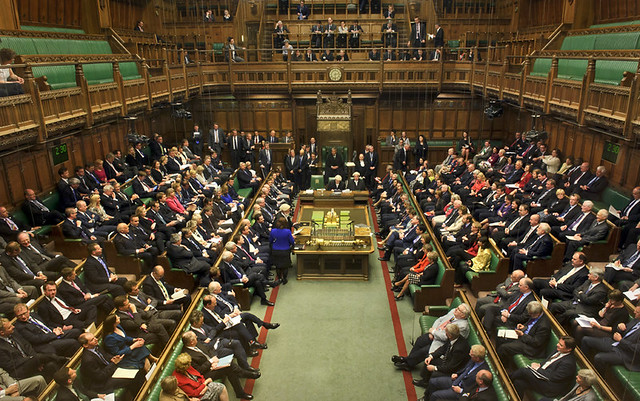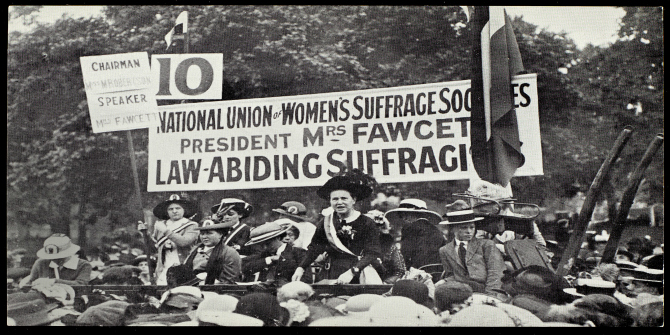 Reg Prentice remains the most high-profile politician to cross the floor of the House of Commons in the post-war period. His defection reflected an important sea change in British politics: the end of the post-war consensus and the beginnings of the Thatcher era. This book seeks to examine the key events surrounding Prentice’s transition from a front-line Labour politician to a Conservative minister in the first Thatcher government. Recommended reading for anyone interested in modern British political history, writes James Farror.
Reg Prentice remains the most high-profile politician to cross the floor of the House of Commons in the post-war period. His defection reflected an important sea change in British politics: the end of the post-war consensus and the beginnings of the Thatcher era. This book seeks to examine the key events surrounding Prentice’s transition from a front-line Labour politician to a Conservative minister in the first Thatcher government. Recommended reading for anyone interested in modern British political history, writes James Farror.
 Crossing the Floor: Reg Prentice and the Crisis of British Social Democracy. Geoff Horn. Manchester University Press. June 2013.
Crossing the Floor: Reg Prentice and the Crisis of British Social Democracy. Geoff Horn. Manchester University Press. June 2013.
Over the course of its relatively brief existence, the British Labour Party has been forced to endure several high-profile and politically humiliating defections in Parliament. The mass exodus of Labour MPs to the Social Democratic Party following the latter’s formation in 1981 is undoubtedly the most famous case in point. Yet, whilst this affliction has at times had a profound effect on the Party’s ability to govern effectively and to provide credible opposition, some defections have aroused more resentment within the Labour movement than others. In his new work, Crossing the Floor, historian Geoff Horn considers arguably the most controversial of them all.
Despite having served as a Cabinet Minister in four different governments, Reg Prentice is best remembered as the highest ranking Labour figure to have ever switched allegiance to the Conservatives. His unprecedented decision to defect in October 1977 was greeted with much animosity within the Labour Party, precipitating charges of treachery and duplicity that have stayed with his name ever since. Yet, all this notwithstanding, few historians have accorded much attention to Prentice over the years. In Crossing the Floor, therefore, Horn offers the first detailed account of Prentice’s defection. In particular, Horn demonstrates how Prentice reached his decision to join the Conservatives and highlights the various factors that underpinned it. His analysis draws on a wide-range of recently released and previously unseen archival documents, numerous private interviews, and a breadth of secondary material, including memoirs and diaries.
Whilst Horn’s analysis spans the entirety of Prentice’s political career, it is the chapters dealing with the three years prior to his defection that are the most captivating and illuminating. In Chapter 5, Horn considers how developments during Prentice’s time as Secretary of State for Education between March 1974 and June 1975 made him seriously question his future within the Labour Party for the first time. Horn notes that, whilst Prentice was already on the right of the Party, the emergence of another vocal opponent of the government’s left-wing policies in the Home Secretary, Roy Jenkins, led him to believe that the Labour movement was becoming an “untenable coalition of incompatible political forces.” (p. 74) Instead, Prentice formed the impression, a national coalition of the major political parties needed to be established. This was the only means of ensuring that a pragmatic economic line would be maintained, as opposed to the dogmatic left-wing policies that the radical wing of the Labour Party demanded.
The next three chapters deal with more local issues. In particular, Horn focuses on attempts made throughout 1975 and 1976 by left-wing activists in Prentice’s constituency, Newham North East, to deselect him as the Labour candidate for the next election. Initially, Horn comments, these efforts only worked to reinforce Prentice’s perception that the Labour Party was becoming an increasingly dichotomised entity. However, as the war of words in Newham grew all the more bitter, compelling Prentice to believe that the battle for the Labour Party’s ideology was reaching crisis point, the thought of establishing a new political party entered his mind. Thus, having “all but given up fighting for the moderate social democratic cause from within”, Prentice turned his attention to “publicising Labour’s fundamental division” (p. 123).

Why then, give all of the above, did Prentice end up as a member of the Conservative Party? Chapter 9 attempts to answer to this question. Here, Horn deals with the events immediately preceding Prentice’s defection. He concludes that the reluctance shown by most of Prentice’s Labour allies in late 1976 and early 1977 towards the idea of establishing a new centrist party – allies who “still clung to the belief that an alliance could be struck up between moderate reformists of Left and Right” – was crucial. (p. 176) At a time when Prentice’s family and closest friends were trying to convince him that he would find a home in the Conservative Party, this development all but ruled out the sort of breakaway from the two-party system that he desired. Hence Prentice was confronted with a straight choice: he could either stand as an independent candidate and see his electoral prospects greatly deteriorate as a consequence, or he could join the Tories, thereby committing the ultimate betrayal. In the circumstances, it was only natural for Prentice to choose the latter course of action.
In short, Horn does a fine job in his new book of elucidating an extremely convoluted story. Whilst always staying close to the major issues at hand, Horn masterfully ties to his analysis the wider decline of the post-war consensus and the identity crisis that the Labour Party experienced during this period, weaving in and out of both themes when the main narrative permits. That said, there is one minor criticism that can be made of the text. Over the past few years, a plethora of official government documentation from the 1970s has been released for viewing at the UK National Archives. Apart from the papers of the Cabinet Office, however, few of these materials figure within Horn’s analysis. This seems slightly odd, especially when considering how germane many of these documents are to the issues dealt with in Crossing the Floor.
Still, this eschewal of official government documentation should not detract greatly from the overall significance of Horn’s work. His expertly written analysis, which is based in any case on a wide-range of archival documentation available elsewhere, makes for an informative and thoroughly enjoyable read that talks to a number of important issues and themes. As such, Horn’s new book does more than simply account for the actions of one man: it speaks volumes about the protean nature of the British political landscape in the late 1970s. For that, Crossing the Floor should be deemed as recommended reading for anyone interested in modern British political history.
———————————————–
James Farror is currently in the final stages of his doctorate at Cardiff Metropolitan University. His research, which is being funded by the Cardiff School of Education, the European Association for American Studies, and the James Pantyfedwen Foundation, considers how the demise of détente between 1977 and 1979 affected the relationship between Britain and America. Aside from US-UK relations, his main research interests include British and American foreign policy and modern British political history. You can follow him on Twitter @JFarror. Read more reviews by James.






